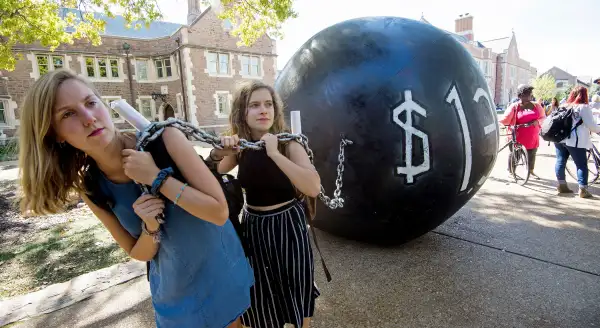A Record Number of People Aren’t Paying Back Their Student Loans

The number of defaulted federal student loans hit a new high in 2016: about 8 million borrowers have given up paying on more than $137 billion in education debts.
That means at least one out of every six people who have any federal student debt haven’t made a payment on their loans for at least nine months, says Jessica Thompson, research director for The Institute for College Access and Success.
In fact, 1.1 million student borrowers defaulted for the first time in 2016, according to data released by the U.S. Department of Education on Friday.
Overall, the total amount of defaulted federal student debt grew by about 14% in 2016. The new record surprised and disappointed Thompson and other experts who had hoped improvements to the economy and to student loan payment options would have had a bigger impact.
After all, the economy and job market appeared to be strong in 2016: The national unemployment rate dropped from 5.3% in 2015 to 4.9% last year.
And the federal government now offers many flexible repayment plans, including income-driven options that allow borrowers to cap their payments on their federal student loans at a maximum of 10% of their disposable income. (Here's everything you need to know about repaying your student loans.)
“In spite of a booming stock market and falling unemployment, there is obviously a significant block of the labor force that is really struggling,” said Rohit Chopra, the former student loan ombudsman at the Consumer Financial Protection Bureau and currently a senior fellow at the Consumer Federation of America. “New college graduates and new entrants to the workforce are facing a double whammy of flat or declining wages and higher debt.”
In addition, Thompson noted that many borrowers have reported difficulty applying for and maintaining an income-based repayment plan. She said that about half of borrowers who sign up for such plans fail to provide sufficient documentation in time to qualify for the lower payment after their first year. (Related: New rules make it easier to get out of federal student loans.)
A spokeswoman for one of the companies that handles billing federal student loans pointed out that the federal loan data also contained some encouraging signs.
The number of borrowers who are delinquent has declined about 2 percentage points in the last two years to about 12 percent, noted Patricia Christel, a spokeswoman for Navient, the loan servicing company that used to be called Sallie Mae. (Borrowers are delinquent if they have missed at least one payment, but have made a payment within the last 270 days)
And the number of new defaulters has fallen slightly even as the number of borrowers who enter repayment (because they have been out of school for six months) has climbed steadily. That indicates the percentage of new repayers who are defaulting is falling, she said.
Despite the decline in the rate of new defaulters, Chopra said the total number of new defaulters has risen because the number of new defaulters was higher than the number of people who managed to get out of default by restarting payments.
